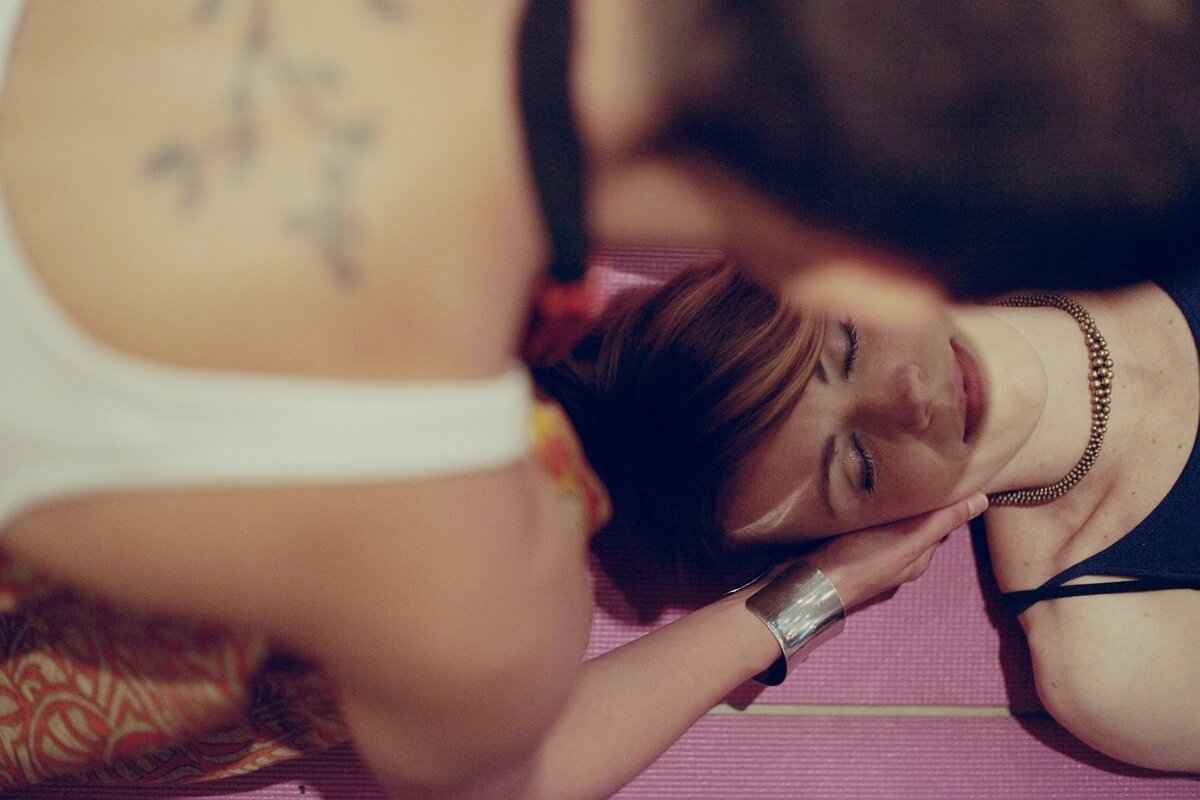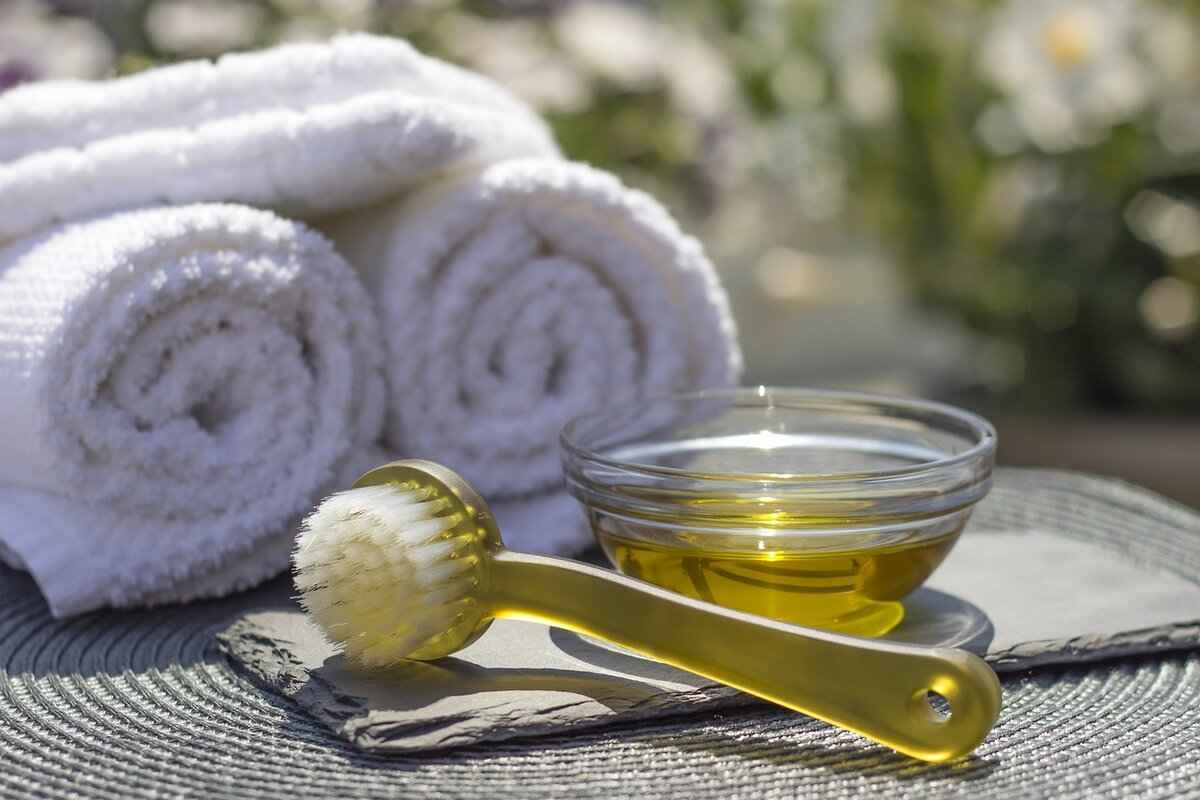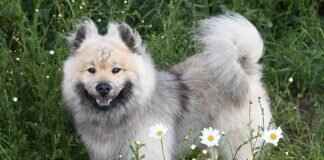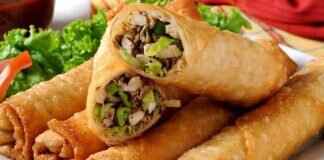This article delves into the intriguing contrasts and similarities between Asian and Western massage techniques, shedding light on their distinct approaches, therapeutic benefits, and cultural significance. Understanding these differences can empower readers to make informed choices regarding their massage therapy options.
Understanding Asian Massage Techniques
Asian massage techniques are deeply rooted in ancient traditions and philosophies. They focus on energy flow and holistic healing, with an emphasis on restoring balance within the body. Techniques such as Shiatsu, Thai massage, and Ayurvedic massage are popular for their unique methodologies, which not only aim for relaxation but also target the body’s energy pathways.
Exploring Western Massage Techniques
In contrast, Western massage practices are largely based on anatomical and physiological principles. Techniques like Swedish and deep tissue massage are designed to manipulate muscles and connective tissues, often targeting specific areas of discomfort or tension. These methods are backed by scientific research, emphasizing the physical benefits of massage therapy.
The Philosophy Behind Asian Massage
Asian massage is often guided by the philosophy of Qi (or Chi), which is believed to flow through the body’s meridians. This practice aims to balance physical and emotional health, emphasizing a holistic approach to wellness.
Common Techniques in Asian Massage
- Shiatsu: Utilizes finger pressure on specific points to enhance energy flow.
- Thai Massage: Combines acupressure and yoga-like stretching for flexibility and relaxation.
- Ayurvedic Massage: Tailors techniques based on individual constitution and energy channels.
Popular Techniques in Western Massage
- Swedish Massage: Involves long, flowing strokes to promote relaxation.
- Deep Tissue Massage: Targets deeper muscle layers for chronic pain relief.
- Sports Massage: Designed to enhance athletic performance and recovery.
By understanding the unique attributes of both Asian and Western massage techniques, individuals can better appreciate their options and select a therapy that aligns with their personal health goals and preferences.

Understanding Asian Massage Techniques
Asian massage techniques are a rich tapestry of methods that have evolved over thousands of years, deeply rooted in ancient traditions and philosophies. These techniques prioritize the flow of energy, often referred to as Qi or Prana, and aim to achieve holistic healing and overall well-being. Practitioners believe that by manipulating the body’s energy pathways, they can enhance physical health, emotional balance, and spiritual harmony.
One of the most notable aspects of Asian massage is its emphasis on the interconnectedness of the body and mind. Techniques such as Shiatsu, Thai massage, and Ayurvedic massage are designed to address not only physical discomfort but also emotional and spiritual blockages. This holistic approach is a stark contrast to many Western methods, which often focus solely on physical symptoms.
- Shiatsu: Originating from Japan, Shiatsu employs finger pressure on specific points along the body’s meridians. This technique is believed to stimulate energy flow and alleviate tension, promoting relaxation and healing.
- Thai Massage: This dynamic form of massage combines acupressure with assisted yoga stretches. It enhances flexibility and energy flow, making it an invigorating experience that rejuvenates both body and mind.
- Ayurvedic Massage: Rooted in ancient Indian practices, Ayurvedic massage focuses on individual constitution and energy channels. It utilizes warm herbal oils tailored to the individual’s needs, promoting balance and wellness.
Furthermore, Asian massage often incorporates elements of meditation and breath control, allowing clients to engage in a deeper state of relaxation. This integration of mind-body techniques not only enhances the physical benefits of massage but also cultivates a sense of inner peace and well-being.
In summary, Asian massage techniques offer a holistic approach to health that transcends mere physical manipulation. By focusing on energy flow and the interconnectedness of body and mind, these practices foster a profound sense of relaxation and well-being.

Exploring Western Massage Techniques
When it comes to massage therapy, Western massage techniques are often distinguished by their focus on the physical manipulation of muscles and soft tissues. These techniques are designed not only to promote relaxation but also to address specific physical ailments and enhance overall wellness. With a foundation rooted in scientific principles, Western massage employs various methods that have been studied and validated for their effectiveness.
One of the most popular forms of Western massage is Swedish massage. This technique involves long, flowing strokes, kneading, and rhythmic tapping, which help to improve circulation and reduce muscle tension. The primary goal of Swedish massage is to promote relaxation, making it an ideal choice for individuals seeking relief from stress.
Another widely recognized method is deep tissue massage, which targets deeper layers of muscle and connective tissue. This technique is particularly beneficial for individuals suffering from chronic pain or tension, as it uses firm pressure to relieve tightness and restore mobility. Deep tissue massage is often recommended for athletes or those with physically demanding jobs.
Sports massage is yet another technique that combines elements of Swedish and deep tissue massage. It is specifically tailored for athletes and active individuals, focusing on enhancing performance and preventing injuries. By addressing muscle soreness and improving flexibility, sports massage can be an essential part of an athlete’s training regimen.
In addition to these techniques, Western massage also incorporates modalities such as trigger point therapy and myofascial release. Trigger point therapy focuses on relieving tight knots in muscles, while myofascial release targets the fascia, the connective tissue surrounding muscles. Both methods are effective in alleviating pain and improving range of motion.
Overall, Western massage techniques offer a diverse range of approaches that cater to individual needs. By focusing on the physical aspects of the body, these methods not only promote relaxation but also provide therapeutic benefits that can enhance physical and mental well-being.
The Philosophy Behind Asian Massage
The philosophy behind Asian massage is a rich tapestry woven from ancient traditions and holistic healing practices. Central to this philosophy is the concept of Qi (or Chi), which is understood as the vital life force that flows through all living beings. This energy is believed to circulate through pathways known as meridians, which connect various organs and systems within the body. Maintaining a harmonious flow of Qi is essential for achieving optimal health and well-being.
Asian massage techniques, including Shiatsu, Tui Na, and Thai massage, are designed to balance the flow of Qi. Practitioners utilize a variety of methods such as acupressure, stretching, and rhythmic movements to stimulate specific points along the meridians. This approach not only addresses physical discomfort but also aims to restore emotional and spiritual balance, reflecting a truly holistic perspective.
Moreover, the philosophy of Asian massage emphasizes the idea of balance—between the body and mind, as well as between the individual and their environment. This balance is often disrupted by stress, poor lifestyle choices, or emotional turmoil. Through the application of massage techniques, practitioners help clients reconnect with their bodies, promoting a sense of tranquility and inner peace.
In addition to Qi and balance, the integration of traditional healing systems such as Traditional Chinese Medicine (TCM) and Ayurveda further enriches the philosophy behind Asian massage. These systems provide a framework for understanding the interconnectedness of bodily functions and the influence of external factors on health. For instance, TCM employs diagnostic methods to identify imbalances, guiding the massage techniques used to restore harmony.
Ultimately, the philosophy of Asian massage is not merely about physical manipulation; it is a profound journey toward achieving overall wellness. By embracing this holistic approach, individuals can experience enhanced vitality, reduced stress, and a deeper connection to their own bodies.
Traditional Chinese Medicine and Massage
Traditional Chinese Medicine (TCM) is a holistic health system that has been practiced for thousands of years. It emphasizes the importance of achieving balance and harmony within the body, which is crucial for overall well-being. One of the key components of TCM is its integration with various massage techniques, particularly acupressure and Tui Na.
Acupressure is a technique that applies pressure to specific points on the body, known as acupoints. These points correspond to different organs and systems, allowing practitioners to influence the flow of Qi (life energy) throughout the body. By stimulating these acupoints, acupressure can help relieve pain, reduce stress, and promote relaxation. This method is often used to treat a variety of conditions, ranging from headaches to digestive issues.
Tui Na, on the other hand, is a more dynamic form of massage that combines various hand techniques, such as kneading, rolling, and pressing. This method not only focuses on acupoints but also incorporates the manipulation of muscles and joints. Tui Na is particularly effective for addressing musculoskeletal problems and improving mobility. It is commonly used in conjunction with other TCM practices, such as herbal medicine and acupuncture, to enhance therapeutic outcomes.
The philosophy behind TCM and its massage techniques is grounded in the belief that the body is a complex system where physical, emotional, and environmental factors are interconnected. By restoring balance through these massage techniques, practitioners aim to facilitate the body’s natural healing processes. This holistic approach is what sets TCM apart from many Western practices, which often focus solely on physical symptoms.
In summary, the integration of Traditional Chinese Medicine with massage techniques like acupressure and Tui Na highlights the importance of a holistic approach to health. By focusing on energy flow and balance, these methods not only address physical ailments but also promote overall well-being.
Ayurvedic Principles in Indian Massage
Ayurvedic massage is a profound practice rooted in the ancient traditions of India, emphasizing a holistic approach to health and well-being. This technique is tailored to the individual’s unique constitution, known as dosha, which is determined by a combination of physical, emotional, and spiritual factors. By understanding these personal characteristics, practitioners can customize the massage experience to address specific needs and imbalances.
One of the core principles of Ayurvedic massage is the concept of energy channels, or nadis, which are believed to transport vital energy throughout the body. Blockages in these channels can lead to physical discomfort and mental stress. Through various techniques, such as abhyanga (oil massage) and shirodhara (pouring warm oil on the forehead), Ayurvedic practitioners aim to enhance the flow of energy, promoting relaxation and rejuvenation.
Moreover, Ayurvedic massage integrates the use of natural oils infused with herbs, which not only nourish the skin but also support the body’s healing processes. Each oil is selected based on the individual’s dosha, ensuring that the treatment is both effective and personalized. For instance, sesame oil is commonly used for Vata types, while coconut oil may be preferred for Pitta individuals.
In addition to physical benefits, Ayurvedic massage also focuses on mental well-being. It encourages mindfulness and deep relaxation, allowing individuals to connect with their inner selves. This practice is not merely a physical treatment but a journey towards holistic health, aiming to restore balance and harmony within.
Overall, Ayurvedic massage stands as a testament to the rich tapestry of Indian healing traditions, offering a comprehensive approach to wellness that is increasingly recognized and appreciated in today’s fast-paced world.
Scientific Basis of Western Massage
When discussing the , it is essential to recognize how these techniques are grounded in empirical research and clinical studies. Unlike some traditional methods that rely heavily on ancient philosophies, Western massage is often validated through scientific inquiry, focusing on measurable physiological outcomes.
Research indicates that massage therapy can significantly enhance muscle recovery after physical exertion. Studies have shown that techniques such as deep tissue massage and sports massage can help reduce muscle soreness and improve performance by increasing blood flow and promoting the removal of metabolic waste. This physiological response is crucial for athletes and anyone engaged in regular physical activity.
Moreover, Western massage techniques are also linked to stress reduction. The act of physical manipulation can lead to a decrease in cortisol levels, the hormone associated with stress. Additionally, massage can stimulate the production of serotonin and dopamine, neurotransmitters that enhance mood and promote relaxation. This dual effect of reducing stress while enhancing well-being makes massage a popular choice for those seeking holistic health improvements.
Furthermore, the benefits of massage extend beyond just physical recovery and stress relief. Scientific studies suggest that regular massage therapy can lead to improvements in overall health markers, including blood pressure and heart rate. These findings highlight the importance of incorporating massage into a comprehensive wellness routine.
In conclusion, the scientific backing of Western massage techniques emphasizes their effectiveness in promoting muscle recovery, reducing stress, and enhancing overall health. As more research emerges, the understanding of these techniques continues to evolve, providing individuals with reliable options for improving their well-being.

Common Techniques in Asian Massage
Asian massage encompasses a broad spectrum of techniques, each with its own unique characteristics and benefits. This diversity allows practitioners to cater to individual needs, promoting relaxation and holistic healing. Below, we explore some of the most common techniques in Asian massage, including their origins and specific advantages.
- Shiatsu: Originating from Japan, Shiatsu is a form of massage that utilizes finger pressure on specific points along the body’s meridians. This technique aims to enhance the flow of Qi (energy) and alleviate tension. Practitioners often incorporate gentle stretches and rhythmic movements, making it a deeply relaxing experience.
- Thai Massage: Known for its dynamic and interactive nature, Thai massage combines elements of acupressure and yoga. The therapist uses their hands, knees, and feet to perform stretches and apply pressure, promoting flexibility and energy flow. This technique is particularly effective for those seeking to improve their overall vitality and reduce stress.
- Balinese Massage: Hailing from Indonesia, Balinese massage is a blend of various techniques, including acupressure, stretching, and aromatherapy. It focuses on stimulating blood circulation and enhancing relaxation through long, flowing strokes. The use of essential oils adds an aromatic dimension, further enhancing the sensory experience.
- Tui Na: This traditional Chinese massage technique employs a variety of hand techniques to manipulate the body’s energy channels. Tui Na is often used in conjunction with acupuncture and herbal medicine, aiming to restore balance and promote healing by addressing both physical and energetic blockages.
- Ayurvedic Massage: Rooted in ancient Indian practices, Ayurvedic massage emphasizes the individual’s constitution and energy balance. Techniques such as Abhyanga (oil massage) are tailored to the client’s needs, using specific oils to enhance relaxation and detoxification.
These techniques not only provide physical relief but also foster a deeper connection between the body and mind. By exploring the rich traditions of Asian massage, individuals can find the approach that best suits their wellness journey.
Shiatsu: A Japanese Approach
Shiatsu is a traditional Japanese massage technique that has gained popularity worldwide for its unique approach to wellness and relaxation. Unlike many Western massage techniques that focus primarily on physical manipulation, Shiatsu emphasizes the flow of energy within the body, aligning closely with the principles of Traditional Chinese Medicine (TCM).
At its core, Shiatsu involves the application of finger pressure on specific points, known as tsubo, which correspond to energy pathways or meridians. This method aims to promote the balance of Qi, the vital life force believed to flow through our bodies. By stimulating these points, Shiatsu practitioners can help alleviate tension, reduce stress, and improve overall health.
One of the distinguishing features of Shiatsu is its holistic approach. Practitioners assess the individual’s physical and emotional state, tailoring each session to meet specific needs. This personalization is key, as it allows for a more effective treatment that addresses not just physical discomfort but also emotional and mental well-being.
Shiatsu sessions typically involve the recipient lying fully clothed on a mat while the practitioner uses a combination of finger pressure, stretches, and gentle movements. This technique not only promotes relaxation but also enhances circulation and flexibility, making it beneficial for a wide range of conditions, from chronic pain to stress-related issues.
In addition to its physical benefits, Shiatsu is steeped in cultural significance. It reflects a broader philosophy of wellness that values the interconnectedness of body, mind, and spirit. As more people seek natural and holistic approaches to health, Shiatsu continues to be a prominent choice for those looking to enhance their well-being.
Overall, Shiatsu stands out as a remarkable technique that combines ancient wisdom with practical applications, making it a valuable addition to the diverse world of massage therapies.
Thai Massage: A Dynamic Experience
Thai massage is a unique and dynamic form of bodywork that blends elements of acupressure and yoga-like stretching. This ancient practice, originating from Thailand, is designed to enhance flexibility, stimulate energy flow, and promote deep relaxation. Unlike many Western massage techniques that primarily focus on muscle manipulation, Thai massage offers a holistic approach that addresses both the physical and energetic aspects of the body.
One of the distinguishing features of Thai massage is its use of bodyweight and dynamic movements. Practitioners utilize their hands, feet, elbows, and knees to apply pressure on specific points along the body’s energy lines, known as Sen lines. This technique not only helps to release tension but also encourages circulation and enhances overall well-being.
In addition to acupressure, Thai massage incorporates a series of gentle stretches that resemble yoga poses. These stretches are performed by the practitioner, who guides the recipient through a series of movements that promote flexibility and ease of motion. This aspect of Thai massage is particularly beneficial for individuals seeking to improve their range of motion or recover from physical exertion.
Moreover, the practice of Thai massage is rooted in the principles of mindfulness and breath awareness. Each session encourages participants to focus on their breath and be present in the moment, fostering a deep sense of relaxation and mental clarity. This combination of physical and mental benefits makes Thai massage a powerful tool for stress relief and rejuvenation.
Ultimately, Thai massage is not just a physical treatment; it is a comprehensive experience that nurtures the body, mind, and spirit. Whether you are seeking relief from tension, an increase in flexibility, or simply a moment of tranquility, Thai massage offers a dynamic and enriching path to wellness.

Popular Techniques in Western Massage
When it comes to massage therapy, Western techniques have gained significant popularity for their effectiveness in addressing specific physical needs. Among the most recognized methods are Swedish, deep tissue, and sports massage, each tailored to provide unique benefits and enhance overall wellness.
Swedish massage is often considered the foundation of modern massage therapy. This technique employs a combination of long, flowing strokes, kneading, and circular movements on the topmost layer of muscles. The primary goal is to promote relaxation, improve circulation, and alleviate muscle tension. Many individuals find this technique particularly beneficial for stress relief and overall relaxation.
For those suffering from chronic pain or muscle tension, deep tissue massage offers a more intense form of therapy. This technique focuses on the deeper layers of muscle tissue and fascia, utilizing firm pressure and slow strokes to release tension. It is especially effective for athletes or anyone engaged in physical activities, as it helps to reduce pain and enhance mobility.
Designed specifically for athletes, sports massage combines elements of Swedish and deep tissue techniques to address the unique physical demands of sports. This method not only aids in muscle recovery but also helps to prevent injuries by improving flexibility and range of motion. Many athletes incorporate this technique into their training regimens to maintain peak performance.
Overall, Western massage techniques like Swedish, deep tissue, and sports massage cater to various physical needs and wellness goals. Whether you seek relaxation, pain relief, or enhanced athletic performance, these methods offer tailored solutions to improve your overall quality of life.
Swedish Massage: The Classic Choice
Swedish massage is one of the most popular forms of massage therapy, known for its ability to promote relaxation and enhance overall well-being. This technique is characterized by a combination of long, flowing strokes, kneading, and gentle movements that work together to relieve muscle tension and improve circulation.
The primary goal of Swedish massage is to induce relaxation and reduce stress. The therapist employs various techniques, including:
- Effleurage: Long, gliding strokes that help warm up the muscle tissue and promote blood flow.
- Petrissage: Kneading movements that target deeper layers of muscle, helping to release tightness and tension.
- Friction: Circular movements applied to specific areas, aimed at breaking down knots and increasing flexibility.
- Tapotement: Rhythmic tapping or percussion that stimulates muscles and invigorates the body.
- Vibration: Shaking movements that can help relax muscles and soothe tension.
One of the key benefits of Swedish massage is its ability to enhance blood circulation. The long strokes and kneading actions stimulate blood flow, which can aid in the delivery of oxygen and nutrients to muscles while facilitating the removal of metabolic waste. This process not only helps in muscle recovery but also promotes overall health.
Furthermore, Swedish massage is often recommended for individuals suffering from chronic pain, muscle stiffness, or stress-related conditions. By addressing both physical and emotional tension, this massage technique can lead to a deeper sense of relaxation and well-being.
In conclusion, Swedish massage stands out as a classic choice for those seeking a therapeutic experience that combines relaxation with effective muscle relief. Its gentle yet effective techniques make it suitable for individuals of all ages and fitness levels.
Deep Tissue Massage: Targeting Tension
Deep tissue massage is a specialized technique that delves into the deeper layers of muscle and connective tissue. This form of massage is particularly beneficial for individuals suffering from chronic pain and tension, as it employs targeted pressure and manipulation to alleviate discomfort. Unlike other massage techniques that focus on relaxation, deep tissue massage aims to address specific areas of tension and pain, making it a preferred choice for many.
The primary goal of deep tissue massage is to release muscle knots and relieve tension in the fascia, which is the connective tissue surrounding muscles. By applying firm pressure and slow strokes, therapists can effectively break down adhesions and promote healing. This technique is especially useful for those who engage in regular physical activity or have experienced injuries, as it helps to improve blood circulation and enhance flexibility.
One of the key benefits of deep tissue massage is its ability to target chronic pain conditions such as lower back pain, tennis elbow, and fibromyalgia. Many clients report significant relief after just a few sessions, as the massage works to release built-up tension and restore normal function to the affected areas. It is essential, however, for individuals to communicate openly with their massage therapist about their specific pain points to ensure a tailored experience.
Despite its many advantages, deep tissue massage may not be suitable for everyone. Individuals with certain medical conditions, such as blood clotting disorders or severe osteoporosis, should consult with a healthcare professional before undergoing this type of therapy. Additionally, it is common to experience some soreness following a session, similar to the feeling after an intense workout.
In conclusion, deep tissue massage serves as a powerful tool for those seeking relief from chronic pain and muscle tension. By understanding its techniques and benefits, individuals can make informed decisions about their wellness journey and explore the healing potential of this therapeutic practice.
Frequently Asked Questions
- What is the main difference between Asian and Western massage techniques?
Asian massage techniques focus on energy flow and holistic healing, while Western massage tends to emphasize physical manipulation of muscles to address specific ailments.
- Are there any health benefits to Asian massage?
Absolutely! Asian massage can enhance relaxation, improve energy flow, and promote overall well-being by balancing the body’s energy systems.
- What are some common Asian massage techniques?
Common techniques include Shiatsu, Thai massage, and Balinese massage, each offering unique benefits for relaxation and healing.
- How does Western massage support physical health?
Western massage techniques, such as Swedish and deep tissue massage, are often backed by scientific research, showing their effectiveness in muscle recovery, stress reduction, and overall health improvement.
- Can I benefit from both types of massage?
Definitely! Many people find that combining both Asian and Western massage techniques can provide a more comprehensive approach to relaxation and healing.














